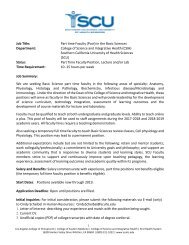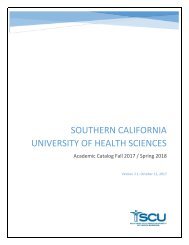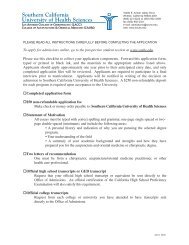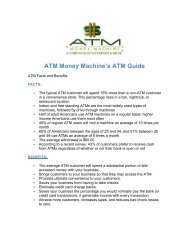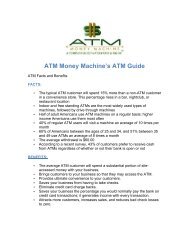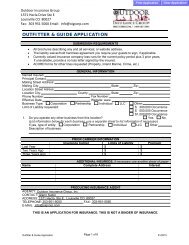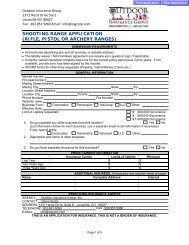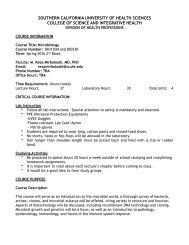Southern California University of Health Sciences - Consumer Information Guide
SCU distributes this Consumer Information Guide which includes a notice of the availability of information required pursuant to specific requirements under the Higher Education Opportunity Act. Read this PDF and know SCUHS consumer information guide.
SCU distributes this Consumer Information Guide which includes a notice of the availability of information required pursuant to specific requirements under the Higher Education Opportunity Act. Read this PDF and know SCUHS consumer information guide.
Create successful ePaper yourself
Turn your PDF publications into a flip-book with our unique Google optimized e-Paper software.
term, a group <strong>of</strong> courses in a program that do not span the entire length <strong>of</strong> the payment period<br />
combined to form a term.<br />
Steps in Determining Institutional Charges<br />
Institutional charges are used to determine the portion <strong>of</strong> unearned Federal Student Aid that SCU<br />
is responsible for returning. Title IV program funds are used to pay institutional charges ahead <strong>of</strong><br />
all other sources <strong>of</strong> aid. The institutional charges used in the calculation are always the charges<br />
that were assessed the student for the entire period <strong>of</strong> enrollment prior to the student's<br />
withdrawal. Application fees are excluded from institutional charges because they are not an<br />
educational cost. Student's institutional charges are generally defined as charges for tuition and<br />
fees, and other educational expenses that are paid to the school directly. SCU does not include<br />
books, supplies, equipment, and materials as institutional charges. A charge assessed to all<br />
students enrolled in a course or program is an institutional charge whether or not it is assessed to<br />
all students at the school. Moreover, a charge does not have to be specified in a student’s<br />
enrollment/admissions agreement to be considered an institutional charge. Generally, the higher<br />
the institutional charges, the greater the amount <strong>of</strong> unearned aid that is to be returned by the<br />
school.<br />
Steps in the Return <strong>of</strong> Title IV Funds Policy<br />
Step 1: Student's Title IV information<br />
34 CFR 668.22(a)(2).<br />
Student Accounts <strong>of</strong>fice will determine:<br />
The total amount <strong>of</strong> Title IV aid disbursed for the semester in which the student withdrew. A<br />
student's Title IV aid is counted as aid disbursed in the calculation if it has been applied to the<br />
student's account on or before the date the student withdrew.<br />
The total amount <strong>of</strong> Title IV aid disbursed plus the Title IV aid that could have been disbursed<br />
for the semester in which the student withdrew.<br />
Step 2: Percentage <strong>of</strong> Title IV Aid Earned<br />
Student Accounts <strong>of</strong>fice will calculate the percentage <strong>of</strong> Title IV aid earned as follows:<br />
The number <strong>of</strong> calendar days completed by the student divided by the total number <strong>of</strong> calendar<br />
days in the semester in which the student withdrew. The total number <strong>of</strong> calendar days in a<br />
semester shall exclude any scheduled breaks <strong>of</strong> more than five days.<br />
Days Attended ÷ Days in Enrollment Period = Percentage Completed<br />
If the calculated percentage completed exceeds 60%, then the student has "earned" all the Title<br />
IV aid for the enrollment period.<br />
Step 3: Amount <strong>of</strong> Title IV Aid Earned by the Student<br />
Student Accounts <strong>of</strong>fice will calculate the amount <strong>of</strong> Title IV aid earned as follows:<br />
67




